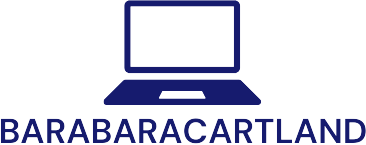Table of Contents
ToggleThinking about retirement? It’s never too early to start planning, and an Individual Retirement Account (IRA) might just be your golden ticket. Picture this: while your friends are still figuring out their Netflix passwords, you could be securing your financial future. Starting an IRA isn’t just smart; it’s like giving your money a cozy little nest to grow in.
Understanding IRAs
Individual Retirement Accounts (IRAs) serve as essential vehicles for retirement savings, enabling individuals to grow their wealth tax-deferred. By investing in an IRA, people can enhance their financial security for the future.
What Is an IRA?
An IRA is a tax-advantaged account designed to encourage saving for retirement. Contributions made to this account can reduce taxable income in the year they are made. Individuals can invest in stocks, bonds, or mutual funds within the IRA, allowing for diverse portfolio growth. Distributions typically occur after the age of 59½, ensuring funds remain designated for retirement.
Types of IRAs
Various types of IRAs cater to different financial situations. A Traditional IRA allows tax-deductible contributions, with taxes paid upon withdrawal during retirement. Roth IRAs involve after-tax contributions, permitting tax-free withdrawals in retirement under certain conditions. Moreover, SEP IRAs designed for self-employed individuals and small business owners offer higher contribution limits. SIMPLE IRAs, tailored for small businesses, provide a streamlined way for employees to save. Each type presents unique benefits, making it essential to evaluate which option fits individual financial goals best.
Steps to Start an IRA

Starting an IRA involves a few critical steps. Following a structured approach can help ensure successful retirement planning.
Assessing Your Financial Goals
Identifying financial goals plays a vital role in establishing an IRA. Consider short-term and long-term objectives, focusing on how much money to save for retirement. Evaluating current expenses provides insights into how much one can contribute. Determine desired retirement age as well as lifestyle choices post-retirement. Prioritize savings; the earlier contributions begin, the more potential for growth.
Choosing the Right Type of IRA
Understanding the different types of IRAs is essential for making an informed choice. Traditional IRAs offer tax-deductible contributions, whereas Roth IRAs allow tax-free withdrawals in retirement. SEP IRAs cater specifically to self-employed individuals, providing higher contribution limits. SIMPLE IRAs serve small businesses, making retirement savings accessible for all employees. Match the chosen plan to individual financial circumstances and tax situations to optimize benefits.
Selecting a Financial Institution
Evaluating financial institutions is crucial when starting an IRA. Research various providers, focusing on fees, investment options, and account access. Compare online brokers with traditional banks to find the best fit. Read customer reviews to gauge reliability and service levels. Selecting an institution with strong support can provide guidance during the investment journey. With a suitable provider, the IRA setup process becomes more straightforward and efficient.
Funding Your IRA
Funding an Individual Retirement Account (IRA) involves understanding contribution limits and making initial deposits. Both aspects play a critical role in maximizing the benefits of the account.
Contribution Limits
The IRS sets annual contribution limits for IRAs. For tax year 2023, individuals under age 50 can contribute up to $6,500, while those aged 50 and older can contribute up to $7,500. Adjustments may occur in future years based on inflation. This limit applies to the total contributions across all IRAs held. Close attention should be paid to these limits to avoid excess contributions, which can lead to tax penalties.
Making Initial Contributions
Making initial contributions marks a significant step toward securing retirement funds. Individuals can begin funding an IRA as soon as they open the account. Contributions may come from various sources, including earned income or rollover funds from other retirement accounts. Regular monthly deposits can help cultivate habits of saving, so setting up automatic transfers may provide a consistent approach. Establishing an initial contribution as early as possible enhances the potential for tax-deferred growth over time. Focusing on regular contributions creates a stronger financial foundation for retirement planning.
Managing Your IRA
Managing an IRA involves selecting investment options and regularly monitoring account performance. Active management ensures the account aligns with retirement goals.
Investment Options
Various investment options exist for IRA holders. Stocks provide growth potential, while bonds can offer stability. Mutual funds allow diversification in a single investment, making them appealing for many. Exchange-traded funds (ETFs) present a low-cost alternative to traditional mutual funds. Real estate investment trusts (REITs) offer exposure to real estate markets, adding another layer of diversification. Exploring these options helps align investments with risk tolerance and time horizon, enhancing growth prospects over time.
Monitoring Performance
Monitoring account performance is essential for effective IRA management. Regularly reviewing investment performance helps gauge if the current strategy remains effective. Benchmarks in the same investment category provide valuable comparisons. Adjustments might be necessary if investments consistently underperform. Tracking fees associated with account management is also crucial, as high expenses can erode returns. Utilizing financial tools and statements aids in maintaining clarity about growth and strategy effectiveness. Making necessary adjustments keeps the retirement plan on track, maximizing the potential for tax-deferred growth.
Starting an IRA is a significant step toward achieving financial security in retirement. By understanding the different types of IRAs and their unique benefits individuals can tailor their savings strategies to fit their specific needs.
Establishing regular contributions and monitoring account performance are vital for maximizing growth potential. As individuals take control of their financial futures they not only secure their own retirement but also set a positive example for others.
Taking action now can lead to a more comfortable and confident retirement later.




